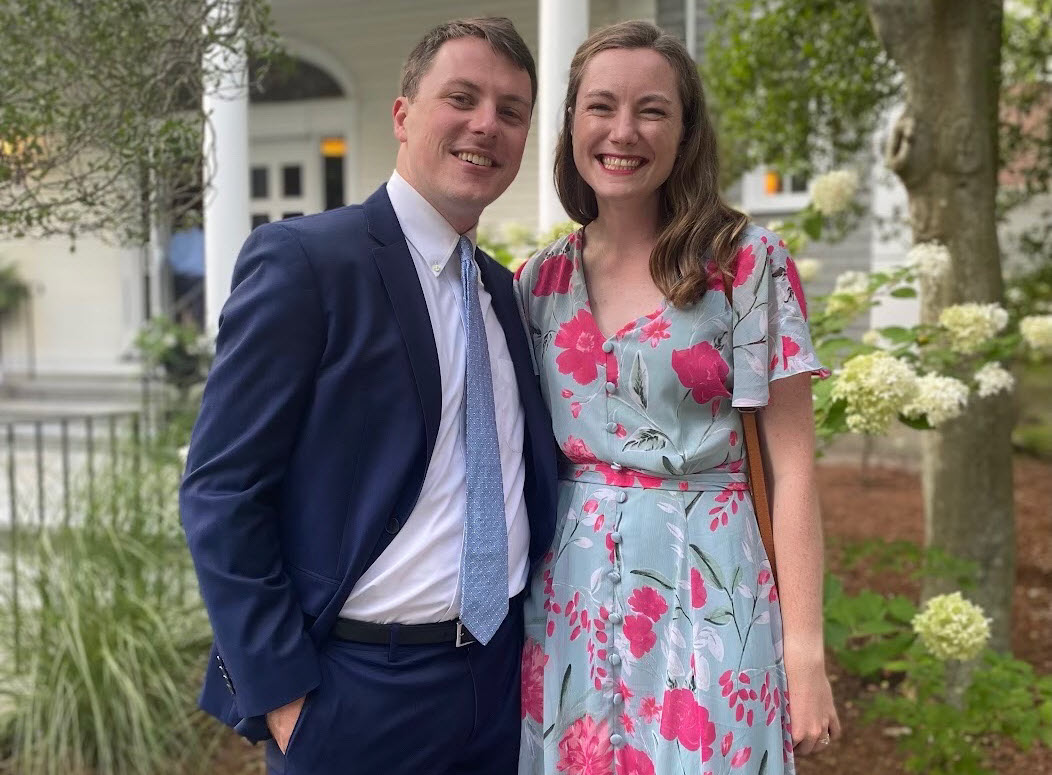FACTS Ambassador Feature: Katelyn Bradley, MD and Conor Bradley, MD
What’s Missing in Medical School Education:
Kate and Conor Share Why They Became FACTS Ambassadors
By: Mariel Padilla
Editor’s Note: FACTS Ambassadors are medical or health professional students and residents from across the country who desire to learn more about fertility awareness-based methods (FABMs) and choose to share this information with colleagues to educate them about FABMs. We will be featuring an ambassador at the beginning of each month to highlight their experiences with FACTS and discuss how they hope to take what they’ve learned and bring it into their future practices. This month we will be featuring two FACTS ambassadors, a husband and wife who found their way to FACTS independently but now share a common goal as ambassadors.
How they found FACTS
Katelyn and Conor Bradley, both 27 years old, met while undergraduates at the University of Notre Dame. Kate studied neuroscience and behavior before attending medical school at Ohio State University, graduating in 2021 — just in time for the couple’s May wedding! Conor graduated from Thomas Jefferson University’s Sidney Kimmel Medical College in 2022.
Katelyn said she was about halfway through medical school when she first heard about the Fertility Appreciation Collaborative to Teach the Science (FACTS) from a physician mentor who was actively practicing under the Fertility Education and Medical Management (FEMM) Model. As she learned more about FACTS and FABMs, Kate decided to become more involved as an ambassador.
“I learned so much additional information through FACTS about the female menstrual cycle, fertility and fertility awareness methods that were not taught in my medical school curriculum,” she said.
Conor agreed, reflecting on his own medical school education:
“I don’t think I received any information in medical school about fertility awareness-based methods, aside from what’s listed on the bottom of the CDC chart — there’s very little actual rigor in the presentation of the methods,” Conor said.
He discovered FACTS on his own in 2019, shortly after Katelyn did, when he attended the American Academy of FertilityCare Professionals’ annual conference held in the greater Philadelphia area that year. It was at this conference, he said, that he was first introduced to FABMs, the research behind some of those methods, and the opportunity to become an ambassador. The Bradleys have been ambassadors since the fall of 2019.

What it means to be an ambassador
When she was an ambassador as a medical student, Katelyn said she attended monthly video calls with students — including other medical students, nursing students, nurse practitioner students and midwifery students — around the country and sometimes even around the world. They would discuss updates on FABMs, ongoing research projects and upcoming conference presentations. These virtual meetings also typically included an educational lecture or talk for the ambassadors.
When Conor became an ambassador, he said it was “empowering” to spread the news about FABMs through blog posts, social media, conferences or lectures. In his first year in the role, Conor hosted a lecture with Dr. Bob Motley, one of the co-founders of FACTS and the vice chair of community medicine at Thomas Jefferson University.
“He came at my request to do a lecture to the general audience of students,” Conor said. “And we actually had really good attendance. About 30 people who I hadn’t known before came from different class years just to learn about what FACTS was all about and to learn about fertility awareness-based methods.”
Katelyn and Conor said, despite the medical school curriculum remaining relatively unchanged when it comes to fertility, they have seen FACTS grow as an organization in the past several years. The FACTS electives are always full and usually have a waitlist, Katelyn said. And the number of ambassadors has more than quadrupled, said Conor, who recently conducted a survey to look at those numbers.
“It’s grown year to year at an accelerated rate,” Conor said. “So that’s amazing news. And these are the future medical professionals in America. … I think just the fact that more and more students are interested is a testament to the promise of the FACTS program and the overall interest in these methods and education.”
How they hope to use FACTS in the future
Katelyn said she knows FACTS work is important because she has met plenty of women who are looking for options outside of traditional birth control methods. She has met women of all ages, from diverse religious and socioeconomic backgrounds and geographic locations who have all expressed a desire to learn more about fertility awareness-based methods but are unable to find a practitioner who can teach them how to chart. Often, Katelyn said, women want to know more about their body, abnormalities in their menstrual cycles, how to avoid pregnancy or how to achieve pregnancy.
Conor said he even has a hard time referring patients to care in Philadelphia, a major U.S. city. There are not enough fertility care practitioners or educators who can assist with patients’ needs.
If more people knew about fertility awareness-based methods, their effectiveness and how they empower patients — Conor said medical professionals would be “flocking to learn how to offer these methods.”
“The need from the patients is just one reason why I know that it’s really important work,” Katelyn said. “There is a deficit in the American medical system that I’m hoping to play a small role in filling.”

ABOUT THE AUTHOR
Mariel Padilla
Meet Mariel Padilla, a journalist working with us as editor of the FACTS blog. In her full-time job, Mariel writes about the intersection between gender, politics and policy — but she was introduced to the FACTS team by her brother, Mikey. When she’s not writing or editing, she’s probably reading, painting or playing with her niece and nephew who live down the street.

